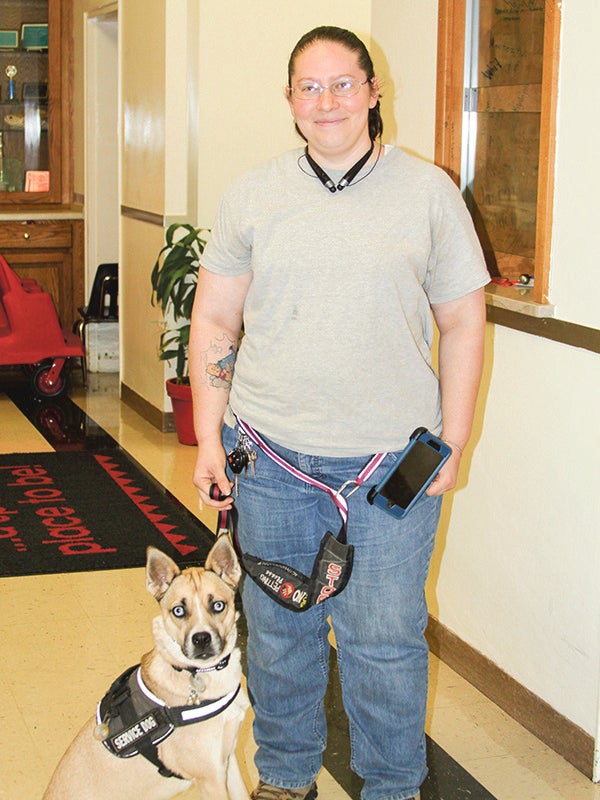Dog in service
Published 10:00 am Thursday, February 2, 2017

- Rose Rachor and her service dog Lily paid close attention to the topics discussed at Tuesday night’s Meeting with the Mayor. (Photo by Alicia B. Hill | LaGrange Daily News)
LaGRANGE – Locals discussed the importance of service dogs for members of the community at the Meeting with the Mayor on Tuesday.
Among the topics discussed at the event, the issue of how people with service dogs are treated in the community was discussed, and one of the biggest hindrances to people requiring service dogs – according to the local who brought the problem up in the meeting – is the lack of education on what a service dog does, where they are allowed to go and how to react to a service dog.
“Just ignore them,” said Rose Rachor, who attended the event with her dog Lily. “You are supposed to pretend that they are not there. They are no different than a cane, a walker, a wheel chair, and sometimes that is really easier (said than done). Legally they are looked at as medical equipment… I can’t leave my house without mine.”
The Americans with Disabilities Act which was passed in 1996 and was later updated in 2010 defines a service animal as any guide dog, signal dog or other animal trained to provide assistance to an individual with a disability regardless of whether they have been certified or licensed by a state or local government. Under the act, businesses are required to allow people with disabilities – including disabilities requiring service dogs – to be allowed onto any part of the business where customers are generally allowed.
“It is very clear under federal law, under the Americans with Disabilities act that you have to allow individuals to use service dogs,” said Mayor Jim Thornton, who is a lawyer by trade. “… You can’t demand proof of disability. You can’t demand proof of training. There is no card you have to carry. If you tell somebody… that you have a disability and that if the service dog is trained to help you with that disability, then that is it. They have to at that point permit you to use that dog in whatever context (applies).”
Service dogs can be trained to assist with a wide variety of disabilities including hearing impairments, mobility impairments with balance, epilepsy and diabetes detection and a variety of psychological disorders. Service dogs are also becoming increasingly common with assisting people with post-traumatic stress disorder, with an emphasis on military veterans though many non-veterans do have dogs who assist individuals dealing with PTSD.
A few places in town have had informational training on how to act around service dogs including Hollis Hand Elementary School and several of the libraries in the Troup-Harris Regional Library system. Though service dogs should not be confused with the program where children sign up to read with therapy dogs Cooper, Bear and Tater who fall under a different category because while they receive extensive training like service dogs, they are encouraged to socialize and provide comfort instead of assisting with medical conditions.
Some service dogs wear special collars or harnesses, but identification and licensing are not required by the Americans with Disabilities Act. Sometimes forms of identification, like vests, prove to be impractical as well.
“My original service dog, for the longest time I couldn’t find any vest that he was comfortable in because of his odd oval shaped chest,” said Rachor. “So for the longest time he wouldn’t wear anything. He would work totally naked. No vest, no nothing on, and by law I’m allowed to (have him with me).”
Because of the ADA, service animals are required to be allowed in places of business – including retail and restaurants – unless their behavior poses a direct threat to others, and because service animals are considered medical equipment instead of pets, normal regulations related to pets do not apply to service dogs.
To learn more about service dogs, what they do and where they are allowed visit https://www.ada.gov/service_animals_2010.htm.
Reach Alicia B. Hill at alicia.hill@lagrangenews.com or at 706-884-7311, Ext. 2154.





